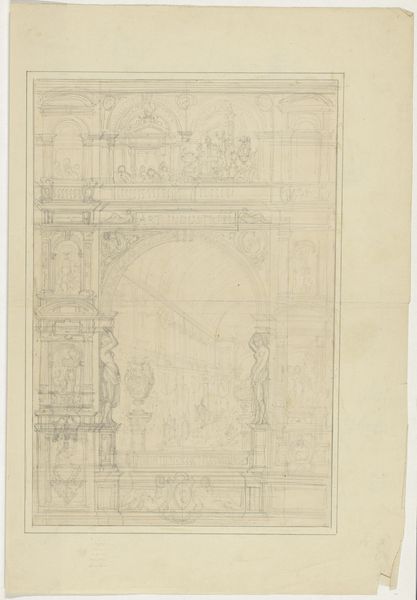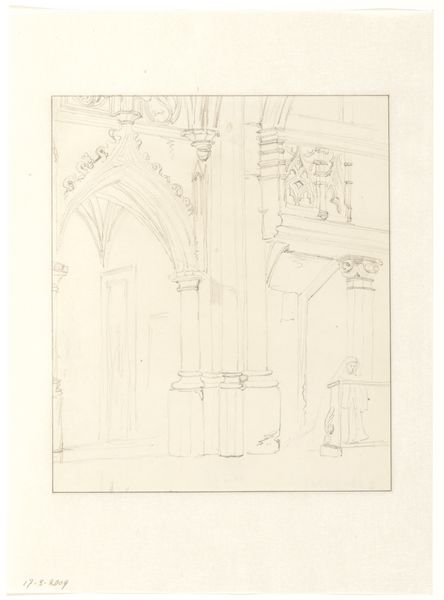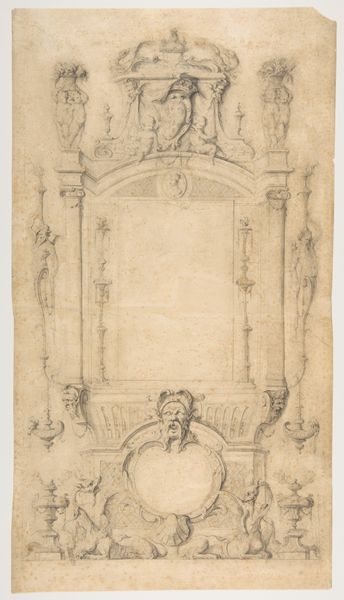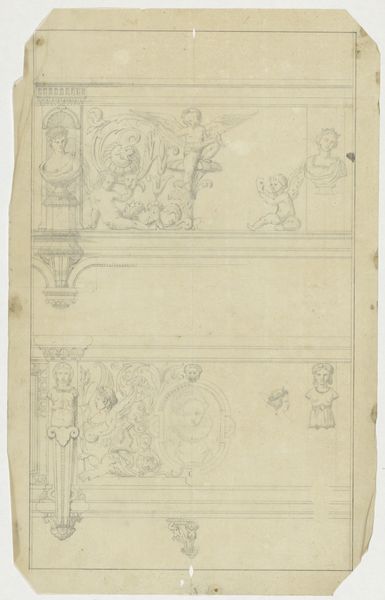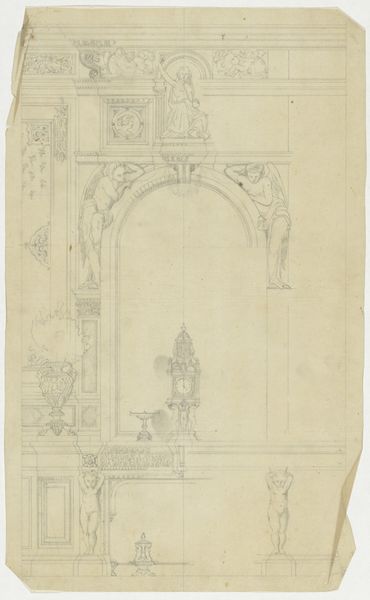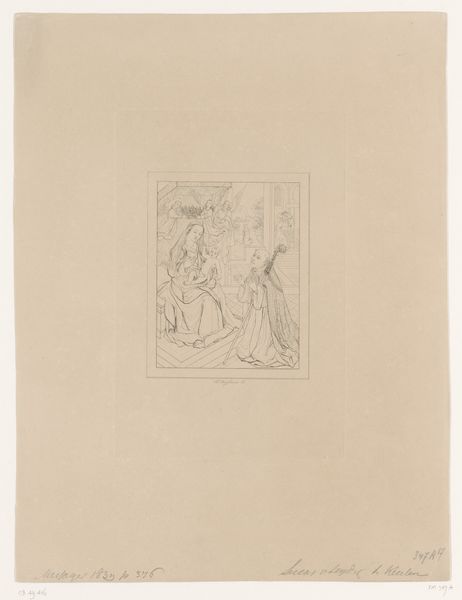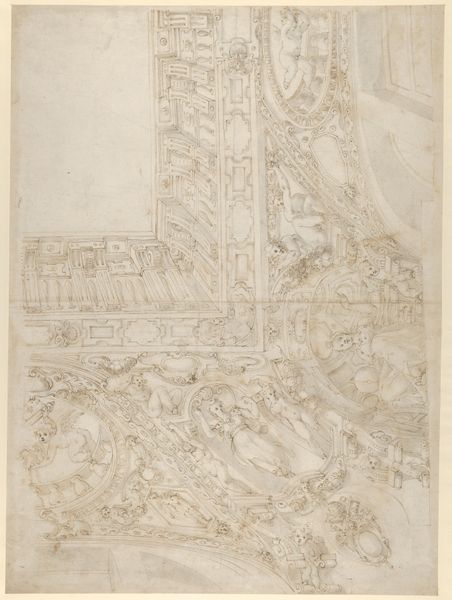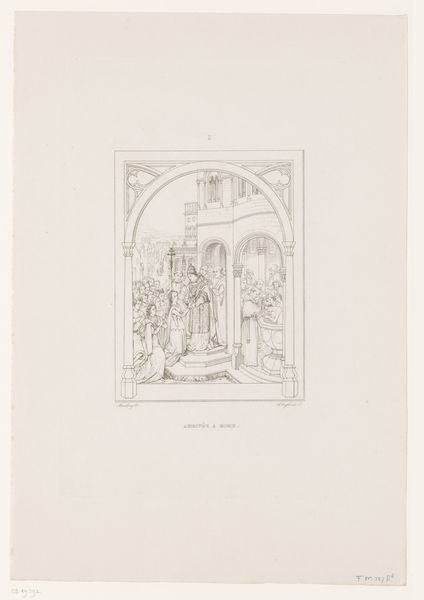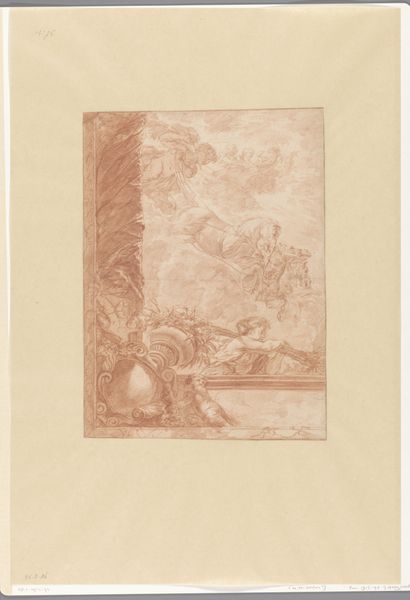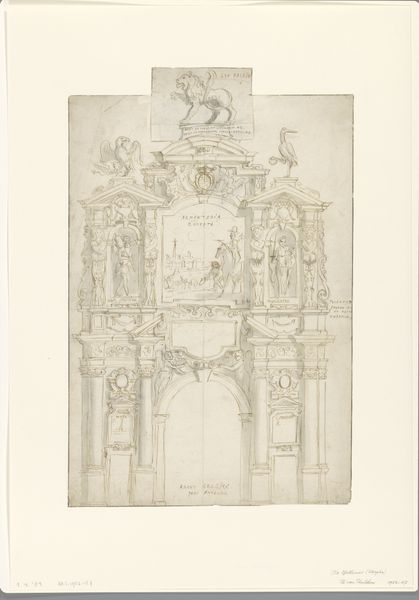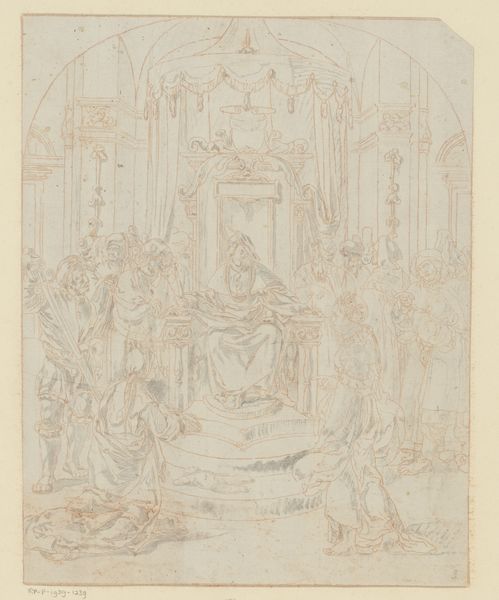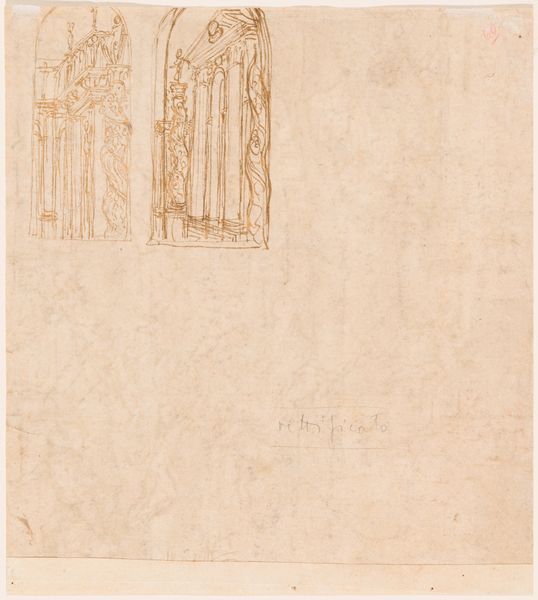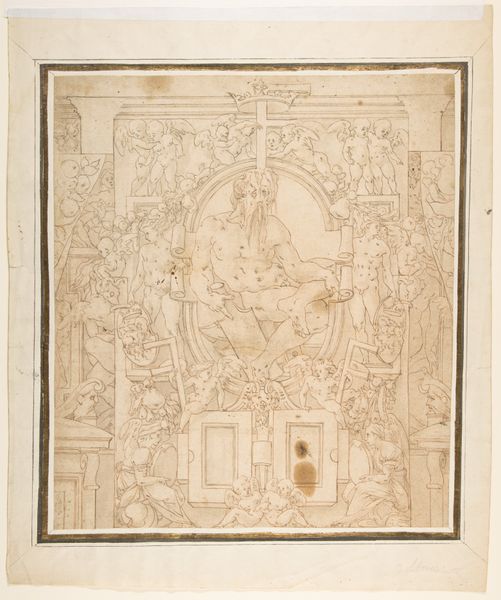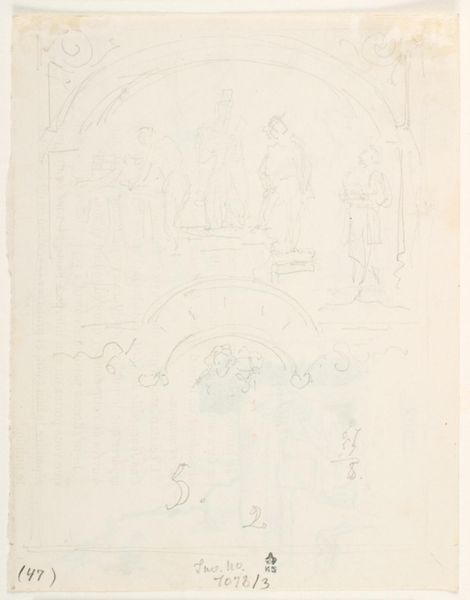
Elevation of the corner of a room decorated with Renaissance-style murals and carved woodwork 1820 - 1897
0:00
0:00
drawing, print, pencil, engraving, architecture
#
drawing
# print
#
11_renaissance
#
column
#
pencil
#
history-painting
#
engraving
#
architecture
Copyright: Public Domain
Curator: Oh, what a hushed interior. It almost feels as if someone is preserving a memory. Editor: It's a beautiful study in perspective and detail. We’re looking at “Elevation of the corner of a room decorated with Renaissance-style murals and carved woodwork,” attributed to Jules-Edmond-Charles Lachaise, created sometime between 1820 and 1897. It’s currently housed at the Metropolitan Museum of Art. What strikes you about it from a materialist perspective? Curator: Immediately, I consider the labor involved. The dense details suggest highly skilled craftsmanship and specialized knowledge—think of the collaborative dynamics required to design and execute murals, carved woodwork, and structural elements within that time frame. The pencil, print, and engraving – quite remarkable combined! How does that strike you? Editor: There’s a curious tension, I find, between the graphic clarity and the softness of the pencil work. The scale feels grand, imposing, and even just slightly dreamlike. You have all these figures depicted on the wall, who could they be? Curator: Perhaps they are the patrons, a narrative the patrons wanted displayed in the space? The choice of Renaissance style evokes specific power structures. It could even be a kind of aspirational statement meant to suggest power. Editor: Or maybe it’s pure nostalgia? The idealized human forms... the suggestion of a lost paradise… Lachaise really captures the essence of grandeur while managing to create a rather light feeling to it, I believe. Curator: Definitely. It gives insight into the social functions and displays of wealth in the past, but it might also offer insights into how certain eras wanted to represent themselves through these sorts of architectural decisions and artistic traditions. Editor: Absolutely. These echoes resonate through time; don't they? Each line a testament to enduring skill, a shadow of grandeur, prompting so many thought trails in both our minds. Curator: Exactly. The materiality informs our reading of its context, and our impressions allow us to question those very frameworks.
Comments
No comments
Be the first to comment and join the conversation on the ultimate creative platform.
